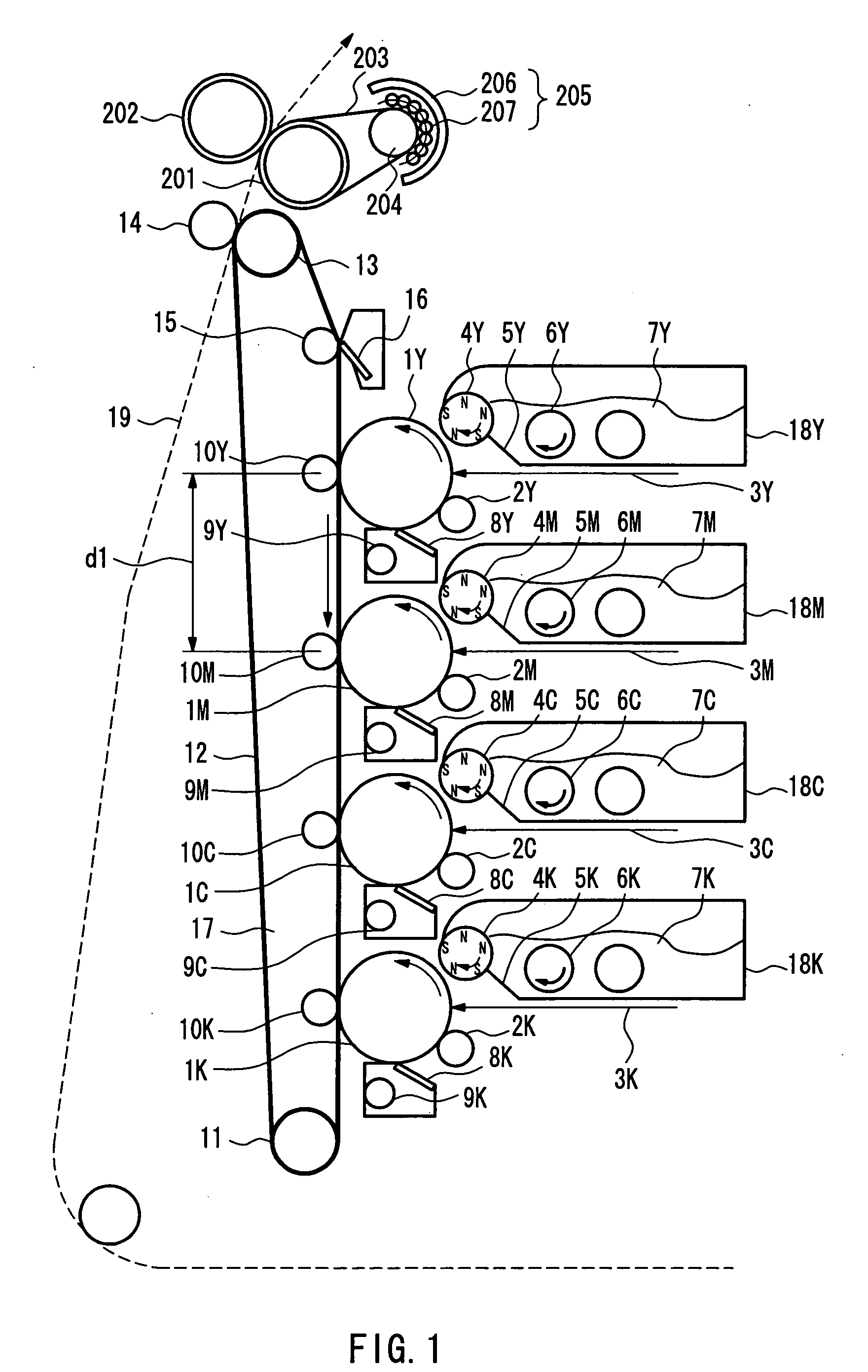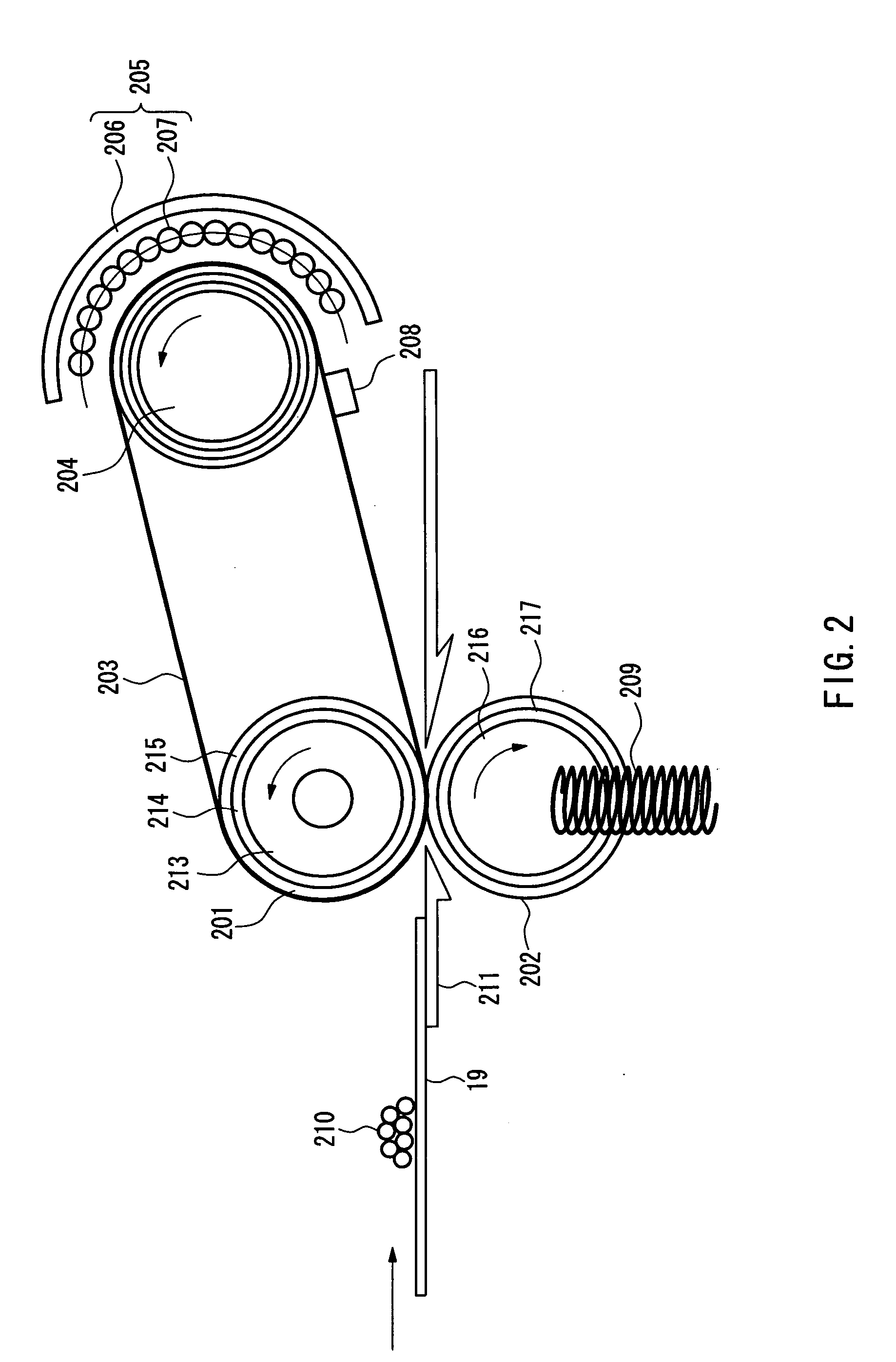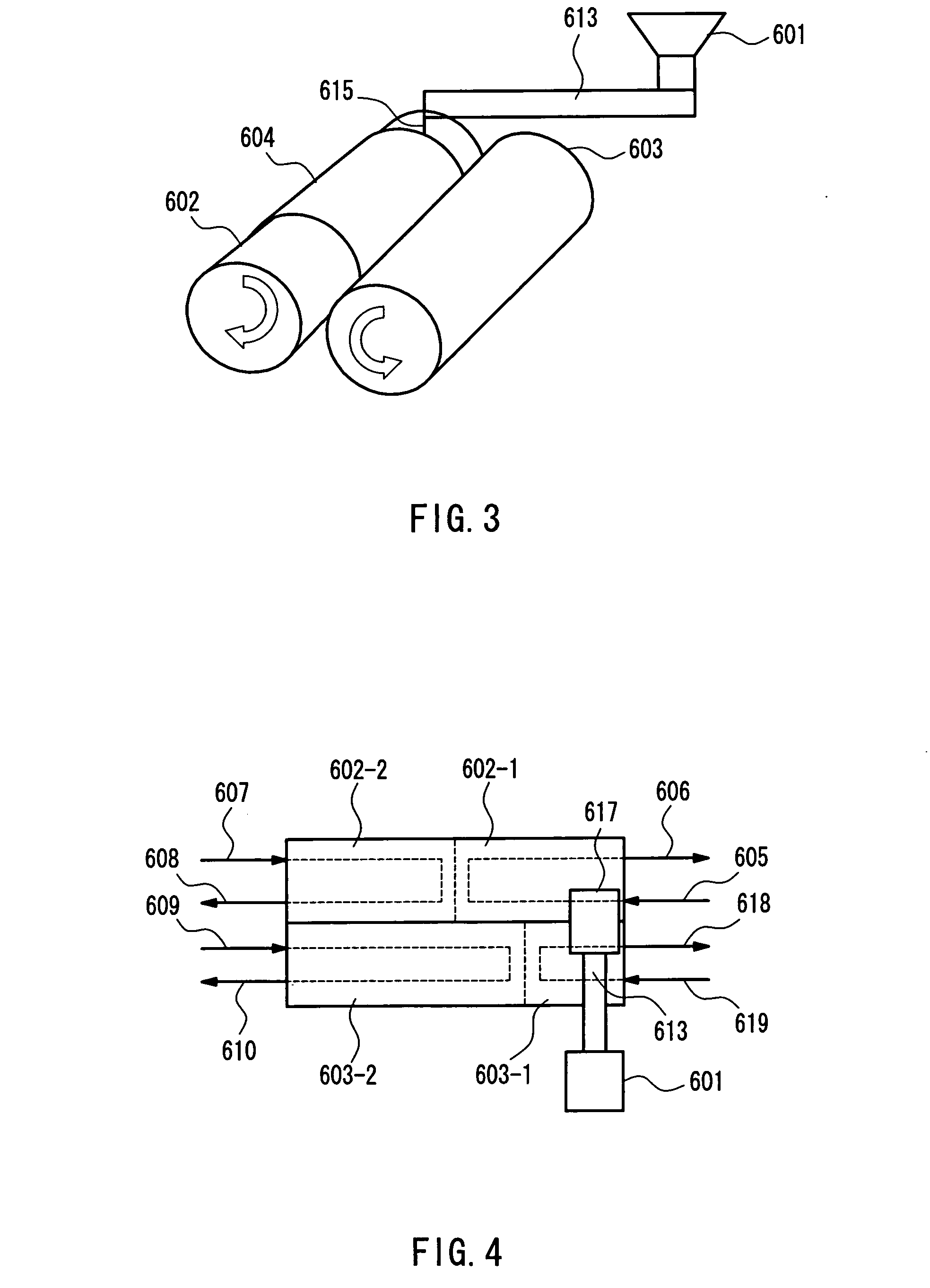Two-component developer and method of forming image therewith
a technology of developer and component, applied in the field of two-component developer and image formation method, can solve the problems of reducing color reproducibility, affecting the quality of the image, so as to achieve suitable negative chargeability, good durability, and avoid the effect of carrier deterioration through toner-spen
- Summary
- Abstract
- Description
- Claims
- Application Information
AI Technical Summary
Benefits of technology
Problems solved by technology
Method used
Image
Examples
working examples
[0233] The present invention now will be described in further detail through working examples, but the present invention is not limited to or by these examples.
example 1
CARRIER MANUFACTURING EXAMPLE 1
[0234] 39.7 mol % MnO, 9.9 mol % MgO, 49.6 mol % Fe2O3, and 0.8 mol % SrO were pulverized for 10 hours in a wet ball mill, then mixed and dried, after which this mixture was pre-baked by being held at 950° C. for 4 hours. This product was pulverized in the wet ball mill for 24 hours, then granulated with a spray dryer, dried, and baked by being held at 1270° C. for 6 hours in an electric furnace in an atmosphere of 2% oxygen concentration. This product was then cracked and graded, which gave a core material made of ferrite particles whose average size was 50 μm and in which the saturation magnetization was 65 emu / g when a magnetic field of 3000 oersted was applied.
[0235] Next, 250 g of a polyorganosiloxane including 15.4 mol % (CH3)2SiO units expressed by Chemical Formula 8 below and 84.6 mol % CH3SiO3 / 2 units expressed by Chemical Formula 9 was reacted with 21 g of CF3CH2CH2Si(OCH3)3, which gave a fluorine-modified silicone resin. This was a demethox...
example 2
CARRIER MANUFACTURING EXAMPLE 2
[0239] A core material was manufactured and coated by the same process as in Carrier Manufacturing Example 1, except that the CF3CH2CH2Si(OCH3)3 was changed to C8F17CH2CH2Si(OCH3)3, which gave a carrier A2.
PUM
 Login to View More
Login to View More Abstract
Description
Claims
Application Information
 Login to View More
Login to View More - R&D
- Intellectual Property
- Life Sciences
- Materials
- Tech Scout
- Unparalleled Data Quality
- Higher Quality Content
- 60% Fewer Hallucinations
Browse by: Latest US Patents, China's latest patents, Technical Efficacy Thesaurus, Application Domain, Technology Topic, Popular Technical Reports.
© 2025 PatSnap. All rights reserved.Legal|Privacy policy|Modern Slavery Act Transparency Statement|Sitemap|About US| Contact US: help@patsnap.com



